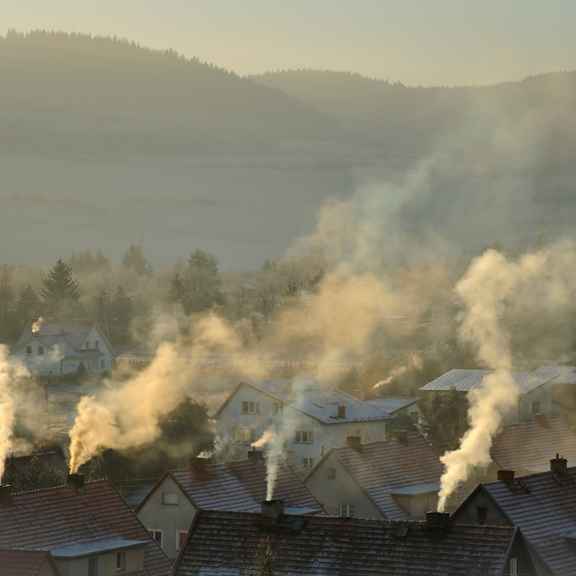Reducing greenhouse gas emissions has been a top priority on the global agenda ever since the United Nations Framework Convention on Climate Change (UNFCCC) was established in 1992.Burning fossil fuels – usually to generate electricity and heat, or fire engines - is the source of 80% of anthropogenic greenhouse gas emissions1. Transitioning to renewable energy is therefore clearly the main solution to achieve these emission reductions. From the appearance of the first wind turbine and solar panel, many actors now contribute to the roll-out of renewables, from governments and financial institutions to businesses and individuals.
It might therefore be a surprise that 2022 was the year with the highest greenhouse gas (GHG) emissions from fossil fuels in recorded history2. Despite all our efforts at an energy transition, we have so far only achieved renewable energy addition.The solar and wind energy we are producing merely covers the rising demand for energy and does not reduce GHG-emissions. The question is: how do we move towards a real energy transition, in which renewable energy really replaces fossil fuels, thus bringing total GHG emissions from global energy generation down?
1. Increase investment massively
The first step would be to massively grow the supply of renewable energy and ensure we operate our energy systems in a fully renewable way. This means electrification of all our operating and production systems, and ensuring electricity comes from renewable sources (100% renewable energy for 100% of the time, for 100% of energy demand). Apart from increasing installed capacity, we must also invest heavily in distribution and storage. The estimated amount of investment needed to transform our current fossil-fuel dependent economy to a low-carbon one is USD 4 to 6 trillion per year between now and 20303. To limit global warming to 2˚C or lower, mitigation investments worldwide will need to increase by a factor 3 to 6. Public investments included in the US Inflation Reduction Act or the European Green Deal are good first steps, but more public investment is required, for example in hydrogen infrastructure. This will induce private investments, by creating new markets and innovation.
2. Increase investment in emerging countries even more massively
Secondly, we need to pay special attention to increasing investments – both public and private - in renewable energy in emerging markets and developing economies. Whereas energy-related GHG-emissions have already peaked in the US and in Europe, they are still rising in most other parts of the world4. Consequently, the financing gaps are much larger in developing economies compared to developed ones.

Energy demand in emerging and developing countries is rising rapidly for two reasons: rising standards of living and the production of carbon-intensive export products. Whilst the richest areas in the world are net importers of carbon-intensive products, emerging markets are exporting them. For the EU as a wholecarbon emissions associated with consumption are 14% higher than those associated with production5. While developing countries are producing to meet this foreign carbon-intensive demand, their national governments do not have the fiscal capacity to invest in the energy transition in the way developed countries’ do.
Decreasing GHG-emissions, overwhelmingly the result of consumption patterns of the wealthiest countries and individuals in the world, is a global challenge. We therefore must find ways to ramp up capital flows for renewable energy investment from developed countries to emerging and developing countries. Multilateral institutions and development banks can be effective at stimulating markets, paving the way for private investment to match their efforts. Developed countries’ governments should give these institutions clear mandates and funding to do so.
3. Reduce energy demand
Thirdly, we need to get serious about reducing our energy demand, especially in developed countries. The surge in energy prices in the past year has shown how fragile our current fossil-based energy system is, but also how effective pricing energy consumption is in decreasing demand. Between August and November 2022 – when natural gas prices were unusually high due to the ongoing war in Ukraine - the consumption of natural gas in the EU dropped by 20% compared to the same period in previous years. In addition to simply decreasing demand, the elevated prices of fossil fuels strengthen the case for switching to renewable energy from a financial point of view.
To drive the energy transition, governments should therefore start pricing energy-related GHG-emissions adequately. Within Europe, the EU Emission Trading System (ETS) is beginning to look promising now that prices have doubled twice in the last three years, now reaching a level the IMF deems sufficient to keep global warming limited to 2˚C. The planned extension of the ETS to maritime transport and the phasing out of free allowances should improve its contribution to the energy transition, as will the ETS for buildings, road transport and fuels that is being established. The timelines, however, could be more ambitious. The Carbon-Border Adjustment Mechanism (CBAM), which aims to price energy-intensive imports into the EU from 2026 onwards, could help stimulating the energy transition in other areas, too.
We must expand these systems to the sectors and scopes currently excluded - bulk chemicals and scope 2 emissions are not included in CBAM - and encourage other governments to follow suit. In addition, given the urgency of the challenge to decrease GHG-emissions, we should complement these pricing instruments with product-specific standards on GHG-emissions and energy use.
If we do these three things – build fully renewable energy systems, finance sustainable development paths in emerging markets and developing economies and reduce energy demand through pricing and standardisation – simultaneously, then we will truly start the energy transition. To stabilise the climate, all of this should be complemented by negative greenhouse gas emissions, starting with nature-based – and nature positive - carbon sequestration.



